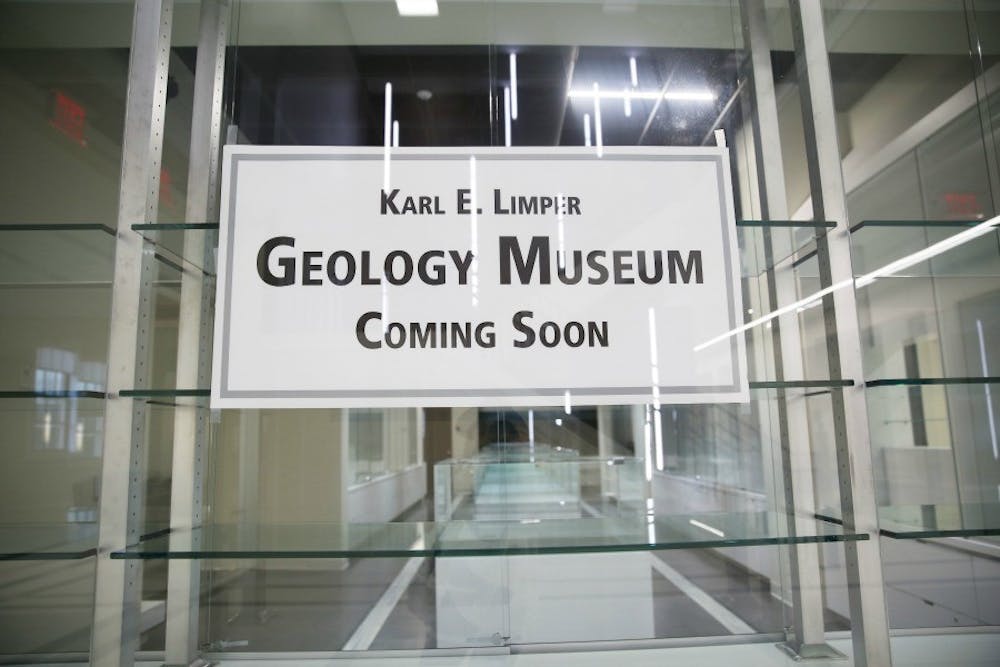Renovation process for Limper Geology Museum coming to a close, promoting learning opportunities for students and the general public
By Vivian Drury, For The The Miami Student
The Limper Geology Museum in Shideler Hall, the newly renovated building for the Department of Geology and Environmental Science, is almost complete.
This facility will house a variety of minerals, rocks and other scientific materials intended to promote student learning, as well as be an attraction for the public.
Kendall Hauer, the museum director, played a key role in laying out the displays.
"We will have a display on rocks, plate tectonics and meteorites," said Hauer. "The heart and soul of our collection is our local fossils and minerals that are from all over the world, all of which have a story."
The museum does not have a set opening date yet, but Hauer hopes to have some of the major displays finished by the fall 2016 semester.
The renovation for the museum has been delayed because designing the layout took longer than expected and some displays required approval from the university. During the renovation, the pieces were stored in Boyd Hall on Western Campus.
One of the biggest displays still pending approval is a four-foot OmniGlobe that will show the Earth's structure in a 3D view, allowing students to visualize what they are learning in the classroom.
"The OmniGlobe would really allow professors to show what they are teaching their students in a different and more interactive way," Hauer said. "They would actually get to fully see many geological aspects of the Earth in a way that is more effective than just a 2D image on a screen."
The museum was located in the basement of Shideler Hall before renovations, making it a little-known facility to most of the public, with the exception of a few professors, according to John Rakovan, a professor of mineralogy and geochemistry.
The renovated museum is now a focal point of the building as it is located on the first floor.
Rakovan believes the new modern design of the museum will attract visitors and promote undergraduate learning.
"It used to be in the basement in the corner, and the lighting and cabinetry were old and it wasn't really ideal," Rakovan said. "Now this is really a modern facility and it's kind of a highlight of the building, so it will set a great impression on the building and hopefully that will draw people in and get them thinking about geology."
About half of the museum will display new specimens, rocks and minerals, and the other half will showcase pieces from the original museum.
After winning a competition, senior Elizabeth Zilch and a few other graphic design students at Miami were selected to design the displays and layout of the materials for the museum.
The designers chose to go with a sleek and modern look to complement the style of the new building, but the displays still looks natural, which they thought would embody the earth science field of study.
"We really took from the materials that are talked about in the geology classes like minerals and earth specimens," Zilch said. "We didn't want to do anything too crazy and [wanted to] keep the theme revolved around the field so students could have a connection of what they're learning in class to what they see in the displays."
The museum is intended for the use of professors and students, but it also serves as a university attraction. It will be open to the public during normal business hours, according to Hauer. The wide range of minerals, fossils, rocks, specimens and other earth science materials will promote scientific learning in a new way.
"There will certainly be after-hours things, too, like outreach school groups, but the intended audience is Miami undergraduate students to help them round out what they learn in their classes and advance their learning," Hauer said.

